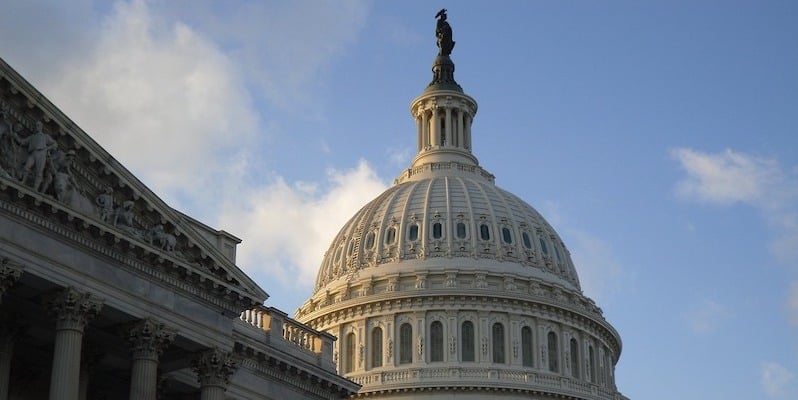This post was originally published Aug 21, 2019 on Roll Call.
Each year, our higher education system confers roughly two million bachelor’s degrees. Unfortunately, it also produces one million student loan defaults. This isn’t simply “two steps forward, one step back.” This is a system-wide failure that, while creating immeasurable value for some, is financially crippling many others along the way. We need college to generate more value for more students.
Some on Capitol Hill are vying for free college. While aspirational, such calls are unlikely to succeed in today’s political environment, and don’t address the broken business model of traditional higher education in the first place. Instead, Congress needs to address not just how much students pay for college, but also “how” they pay. Income share agreements, or ISAs, are an option worth considering.
ISAs, for which legislation is currently under review by the Senate Finance Committee, allow students to pay zero tuition today in exchange for a fixed percentage of their income tomorrow, shifting risk away from students and aligning schools’ incentives with those of their students. The recently proposed ISA Student Protection Act offers policymakers an opportunity to unlock the potential of ISAs and redefine the value of college.
That potential manifests itself in three primary ways.
First, ISAs protect students from paying for educational experiences that don’t create value for them in the labor market. In an ISA, students pay no tuition upfront, only repaying the education provider once employed, and as a fixed percentage of their earnings within a set window of time. For students who experience poor outcomes — like unemployment or low wages — their ISA payments would fall commensurately with their salaries, shifting risk away from students.
The Senate bill — introduced by Republicans Todd Young and Marco Rubio and Democrats Mark Warner and Chris Coons — would codify several measures to ensure that ISAs shift the risk of poor workforce outcomes away from students. One crucial guardrail is the establishment of a minimum income threshold that would apply to all ISA contracts. Students whose income falls below 200 percent of the federal poverty line for an individual would either not pay at all or defer payments until their salary improves, depending on the contract.
Second, ISAs create financial incentive alignment between schools and students. The current student loan system pays schools upfront to enroll students, with virtually no financial consequences if their students struggle after graduation. ISAs, on the other hand, tie the school’s fate to that of its graduates. Remember the risk ISAs shifted away from students? It now rests with the schools and their financial stakeholders.
This incentive alignment doesn’t just punish schools, however. Schools are also rewarded for strong outcomes, as students’ ISA payments rise commensurately with their salaries. This incentivizes schools to teach workforce-relevant skills, provide support to improve retention and completion, and help students navigate the job market. After all, schools are more likely to help students graduate and get good jobs if that’s how the schools get paid. While the current student loan system promotes access to admission, ISAs could promote access to socioeconomic mobility.
The ISA Student Protection Act would keep this upside scenario from becoming exploitative for students who succeed in the labor market, establishing a guardrail that would limit how much ISA providers can charge them. The bill would not permit percentages of income exceeding 20 percent, and would also prevent contracts that combine high percentages with long contract durations.
Third, ISAs can increase access to educational opportunities on multiple fronts, particularly in contexts that fall outside the purview of the traditional financial aid system. For instance, Colorado Mountain College established Fund Sueños to help DACA students finance their college education. Given their undocumented status, these students can’t access Title IV funding. Also, alternative education providers offer programs that, despite generating a good return on investment for many students, are often ineligible for federal financial aid. For example, Lambda School is a coding bootcamp that offers ISAs to make its program accessible for students who can’t afford to pay tuition up front.
Another promising implementation of ISAs that increases access to educational opportunity involves establishing “renewable learning funds” at nonprofit workforce development boards. San Diego Workforce Partnership is working with the University of California San Diego Extension school and philanthropic partners to help job seekers needing financial assistance pay for training programs in high-demand fields. ISAs create a dynamic whereby successful students’ payments cover not only their own training costs, but also those of future students coming through the program.
The recently introduced bill would create clarity around the legal definition of ISAs, required disclosures in ISA contracts, and how ISAs are treated for tax purposes. This clarity would protect students and invite those education and capital providers who held back from participating in the ISA market due to regulatory uncertainty. More players and more capital would mean greater access, especially for students who have either exhausted or are unable to tap into Title IV funds.
ISAs are not a silver bullet that will solve all of higher education’s woes. They can, however, reduce risk for students, incentivize schools to drive more value for those students, and bring more students to the table. Passing legislation on ISAs is a necessary step — forward, mind you — in harnessing these benefits.



